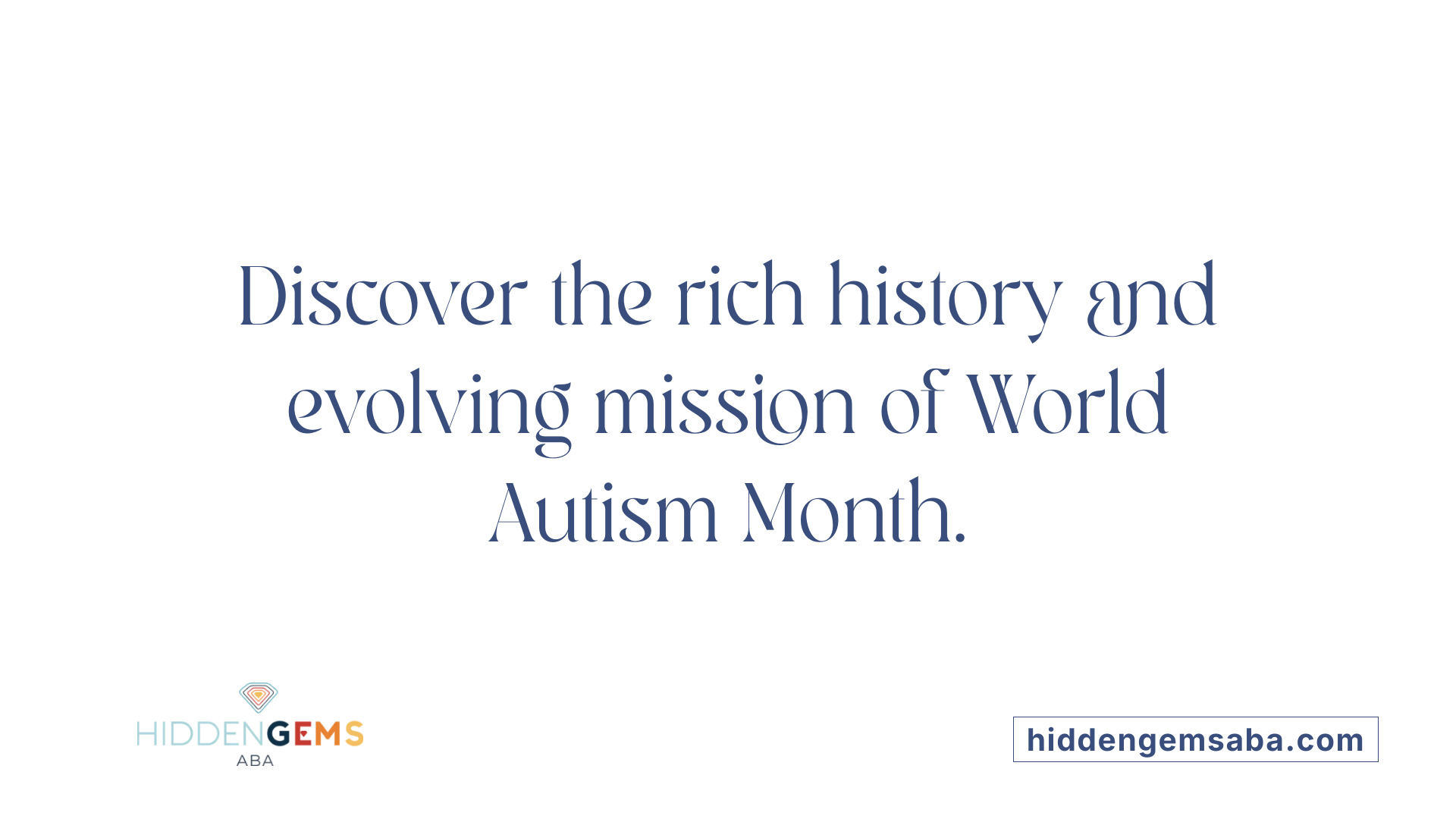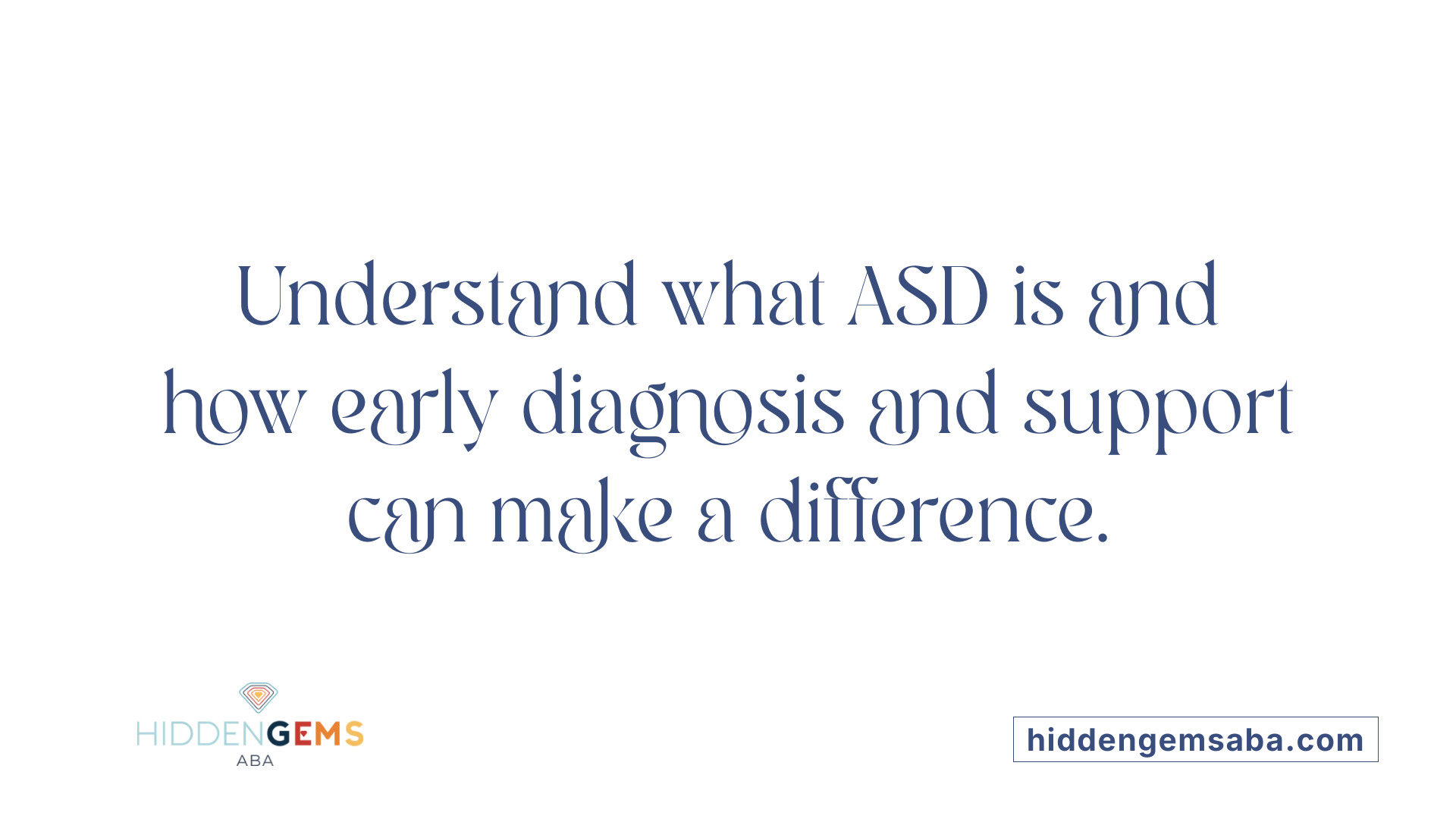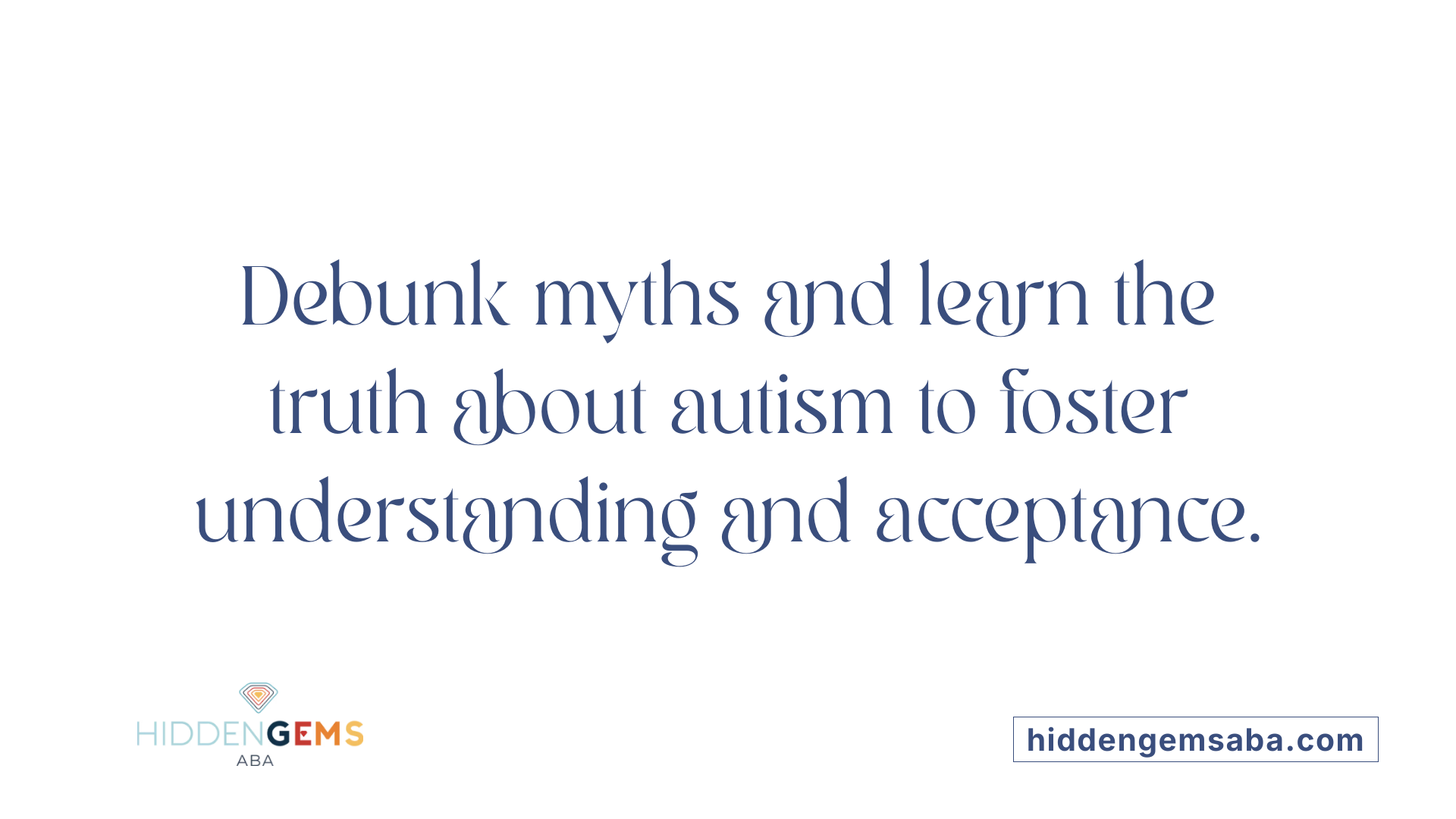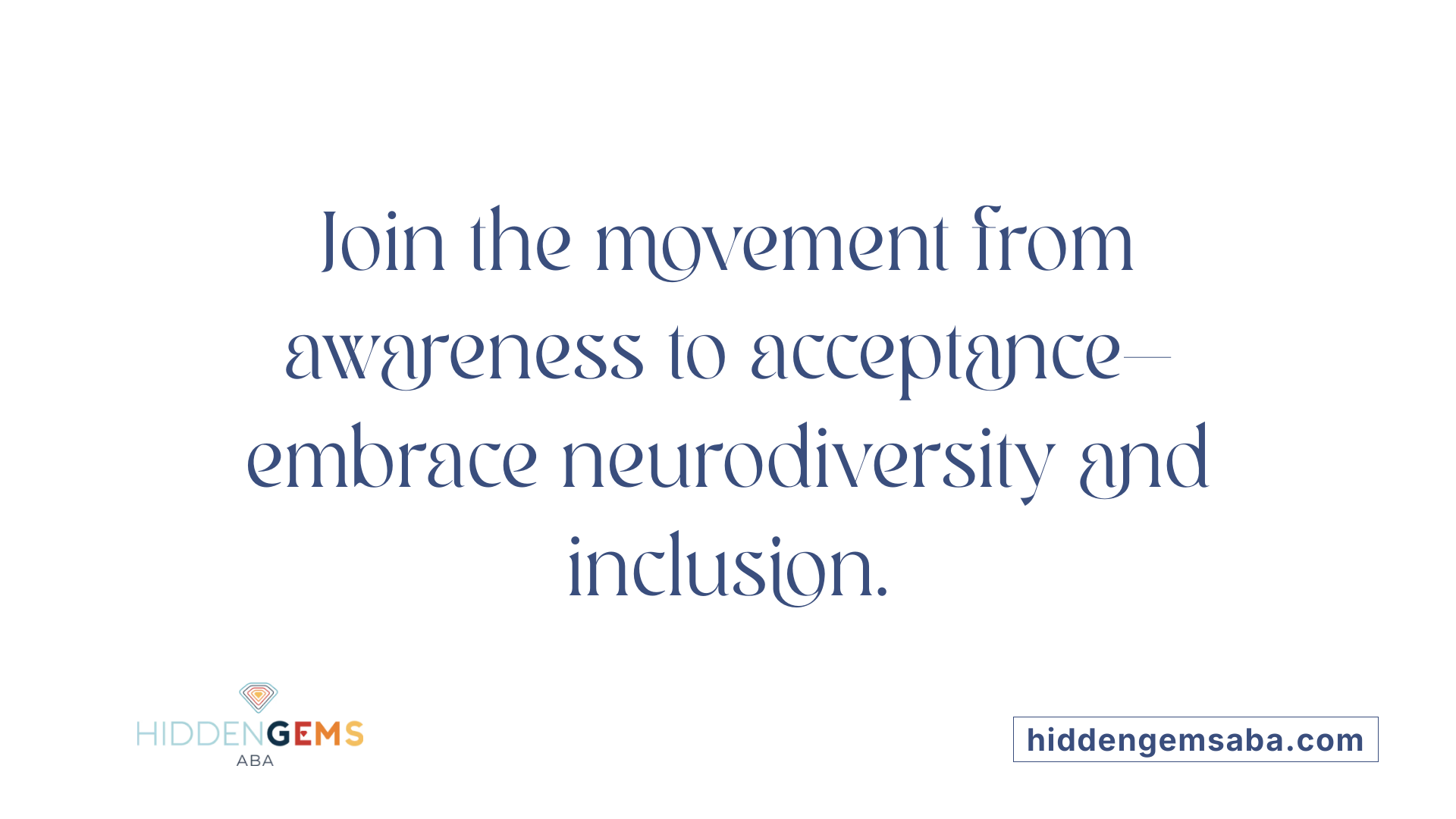Understanding the Significance of World Autism Month
Every April, the global community unites to recognize World Autism Month, a time dedicated to raising awareness, fostering acceptance, and promoting support for individuals on the autism spectrum. Observed since the 1970s and marked notably on April 2nd by World Autism Awareness Day, this month-long initiative has grown into an important platform highlighting the diverse experiences of autistic individuals and advocating for their rights. This article explores the evolving understanding of Autism Spectrum Disorder (ASD), current therapeutic approaches, and the role of advocacy organizations in driving acceptance and change.
The Evolution and Purpose of World Autism Month

History of Autism Awareness Month
World Autism Month, observed every April, originated in the 1970s as Autism Awareness Month. Its initial goal was to increase public understanding of Autism Spectrum Disorder (ASD), a neurodevelopmental condition that affects behavior, social interaction, and sensory processing. Over time, the month has expanded its focus beyond awareness to include advocacy and acceptance efforts.
World Autism Awareness Day
April 2nd holds special significance as World Autism Awareness Day, officially designated by the United Nations in 2007. This day marks a dedicated time to spotlight autism on a global scale, encouraging countries and communities worldwide to recognize the unique experiences of autistic individuals.
Role of the United Nations
The United Nations’ involvement in establishing World Autism Awareness Day reflects global recognition of autism’s importance. In 2008, the UN further supported neurodivergent individuals through the Convention on the Rights of Persons with Disabilities, underlining respect, inclusion, and equitable treatment for autistic people.
Advocacy and Change Over Time
Advocacy organizations like Autism Speaks have played a pivotal role in promoting understanding and acceptance throughout World Autism Month. By encouraging activities such as the "Light It Up Blue" campaign, which illuminates landmarks worldwide in blue, these groups aim to raise awareness and generate community support. Fundraising, education, and resource sharing are also central to this movement.
Shift from Awareness to Acceptance
In recent years, there has been a significant shift from simply increasing autism awareness toward embracing acceptance. This change emphasizes listening to autistic voices and valuing neurodiversity. Instead of focusing on attempts to "cure" autism, efforts now prioritize supporting autistic individuals through accommodations and respect for their differences. This more inclusive approach reflects evolving understanding within the autism community and society at large.
Understanding Autism Spectrum Disorder: Definitions and Diagnosis

What is Autism Spectrum Disorder and how is it characterized?
Autism Spectrum Disorder (ASD) is a neurodevelopmental disorder that affects the brain's development in ways that influence behavior, personality, social interaction, and sensory processing. Individuals with ASD often exhibit patterns of repetitive behaviors and experience challenges in social communication and interaction. These characteristics define the core of the disorder.
How does the DSM-5 categorize autism?
The Diagnostic and Statistical Manual of Mental Disorders, Fifth Edition (DSM-5), classifies ASD into three levels based on the amount of support an individual requires:
- Level 1: Requires minimal support.
- Level 2: Requires substantial support.
- Level 3: Requires very substantial support. This classification helps tailor interventions and support plans to the individual's needs.
At what age can autism be reliably diagnosed?
Reliable diagnosis of autism can occur as early as 2 years old. Behavioral signs that may indicate ASD can sometimes be observed as early as 6 months of age. Early detection plays a crucial role in timely intervention and support.
How prevalent is autism and does it affect certain groups more?
Autism affects approximately 1 in 44 children across all racial, ethnic, and socioeconomic backgrounds. Boys are statistically about four times more likely to receive an ASD diagnosis compared to girls. This demographic insight assists in understanding and addressing the needs of diverse populations affected by autism.
Dispelling Common Myths and Misconceptions about Autism

What are some common misconceptions about autism?
Many people believe autism only affects boys, but although boys are diagnosed about four times more often, autism occurs across all genders, races, ethnicities, and socioeconomic groups. This widespread prevalence means autism is not limited to one specific group.
Misconceptions about communication abilities
A prevalent myth is that all autistic individuals are non-verbal. In reality, communication abilities vary widely among autistic people. Some speak fluently, while others use alternative communication methods. Autism affects individuals differently and does not dictate a single communication style.
False beliefs about causes and treatment
There is no scientific evidence to support claims that vaccines cause autism. Additionally, autism is not a disease to be cured but a neurodevelopmental difference. Treatment focuses on support through therapies like cognitive-behavioral therapy, family support, occupational therapy, and managing any co-occurring conditions.
Clarifying what autism is and is not
Autism Spectrum Disorder (ASD) is a neurodevelopmental disorder characterized by differences in social interaction, communication, and behavior, including repetitive behaviors. It is not a behavioral problem or something caused by poor parenting or external environmental factors.
Understanding and correcting these misconceptions is vital for fostering acceptance and meaningful support for autistic individuals.
Therapeutic Approaches and Support for Autistic Individuals
What treatment and therapy options are available for autism?
Autistic individuals benefit from a variety of therapeutic approaches designed to support their unique needs. Family support and occupational therapy play vital roles in helping individuals and their families navigate daily challenges and develop necessary life skills.
Mental health therapies such as cognitive-behavioral therapy (CBT), dialectical behavior therapy (DBT), and trauma-informed CBT are recommended to address emotional and behavioral concerns. These therapies aim to improve coping strategies, emotional regulation, and interpersonal skills.
Medications may be prescribed to manage co-occurring conditions, such as anxiety or attention difficulties, ensuring a comprehensive treatment plan tailored to the individual's requirements.
What is applied behavioral analysis therapy and why is it controversial?
Applied Behavioral Analysis (ABA) therapy remains a widely used intervention focused on developing skills, enhancing communication, and promoting independence in autistic children. However, it is important to note this method does not attempt to "cure" autism but rather to support functionality.
Despite ABA's prevalence, it has sparked controversy within the autism community. Neurodiversity advocates emphasize acceptance and argue against interventions aimed at altering core autistic behaviors. Instead, they suggest focusing on accommodations and support systems that respect autistic individuals' autonomy and identities.
This shift from exclusively behavior-modifying therapies towards holistic support approaches reflects growing awareness of the diverse experiences and needs within the autism spectrum.
The Role of Autism Speaks and Global Initiatives during World Autism Month

Who is Autism Speaks and what role do they play during World Autism Month?
Autism Speaks is a leading organization that has been actively supporting the autism community for over 20 years. Their mission centers around advocating for better understanding, acceptance, and support for individuals with autism. Each April, Autism Speaks plays a vital role in organizing World Autism Month events and activities that raise awareness worldwide.
What is the Light It Up Blue initiative?
One of Autism Speaks’ most visible campaigns is Light It Up Blue, launched in 2010. This global effort encourages landmarks, buildings, homes, and entire communities to illuminate blue lighting throughout April. The blue glow serves as a symbol of support and helps educate the public about autism spectrum disorder (ASD).
How can individuals and organizations get involved?
Autism Speaks provides official resources such as downloadable logos and promotional materials for anyone wishing to participate in World Autism Month activities. Users must follow specified terms of use to maintain consistency and respect within the campaign. In addition to raising awareness, fundraising is strongly encouraged. Events often include challenges and community engagement opportunities designed to increase involvement. Moreover, Autism Speaks offers guidance and support to organizations and charities that want to host their own autism awareness events, ensuring widespread advocacy and education during this critical month.
Promoting Acceptance and Support Beyond Awareness

How is the community moving towards acceptance beyond awareness?
The autism community and advocates are shifting focus from simply raising awareness to promoting genuine acceptance. This means valuing neurodiversity and emphasizing the importance of listening to autistic voices. Rather than attempting to change or cure autistic individuals, the movement encourages providing support and accommodations that respect different ways of experiencing the world. This approach fosters inclusivity and recognizes the unique strengths of neurodivergent people.
What are some ways to symbolically support autism awareness and acceptance?
Symbolic actions play a big role during World Autism Month, often observed in April starting with World Autism Awareness Day on April 2. Common gestures include wearing blue clothing or accessories and turning on blue light bulbs in homes or community spaces. These visual signs demonstrate solidarity with the autism community and help spark conversations about acceptance and understanding.
What international frameworks support neurodivergent individuals?
On the global stage, the United Nations has taken important steps to support neurodivergent people. In 2007, April 2 was officially designated as World Autism Awareness Day. The following year, the UN adopted the Convention on the Rights of Persons with Disabilities, which aims to protect the rights and dignity of individuals with disabilities, including those with autism. These frameworks reinforce the message that autistic individuals deserve respect, equal opportunity, and access to necessary supports.
Future directions in autism advocacy
Looking ahead, advocacy efforts emphasize supporting autistic individuals’ voices in decision-making and tailoring support to individual needs rather than imposing uniform treatments. The growing neurodiversity movement advocates for societal changes that accommodate diverse neurology and foster environments where autistic people can thrive. This ongoing evolution marks a hopeful trajectory from awareness campaigns toward broad-based acceptance and empowerment.
| Topic | Current Approach | Note |
|---|---|---|
| Community Focus | Emphasizing acceptance over awareness | Listening to autistic individuals is central |
| Symbolic Support | Wearing blue, blue lighting | Used widely during World Autism Month |
| International Protection | UN World Autism Awareness Day; Convention on the Rights of Persons with Disabilities | Strengthens legal rights and inclusion for neurodivergent individuals |
| Future Advocacy | Promote neurodiversity, individualized support | Encourages respect, opportunity, and empowerment for autistic people |
Towards Greater Understanding and Inclusive Support
World Autism Month serves as a vital reminder of the progress made and the work still needed to support autistic individuals around the world. By deepening knowledge, debunking myths, embracing diverse therapeutic approaches, and fostering genuine acceptance, society can create inclusive environments that respect and celebrate neurodiversity. Organizations like Autism Speaks and global initiatives help galvanize communities to promote awareness and advocacy. Ultimately, the aim is to ensure that every autistic person enjoys dignity, opportunity, and support tailored to their unique needs throughout their lives.





